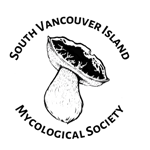SVIMS members made a second spring foray to Metchosin Wilderness Park on May 3, 2025. A group of 25 fungal fans, several of them on their first SVIMS foray, spent two hours chasing down examples of spring fungi.
The walk was organized by Mel Hesz, Caroline Pap, and Ann McCall. Kem Luther and David Walde were walk leaders. Foray coordinators Ian and Tina Brown did the check-in, check-out.
An early advent of the dry season this year has made fungi hard to find. Still, searchers were able to turn up about 25 different species. The full list, with pictures, can be viewed on iNaturalist.
(Click on the accompanying pictures to see the associated iNaturalist observations.)


















